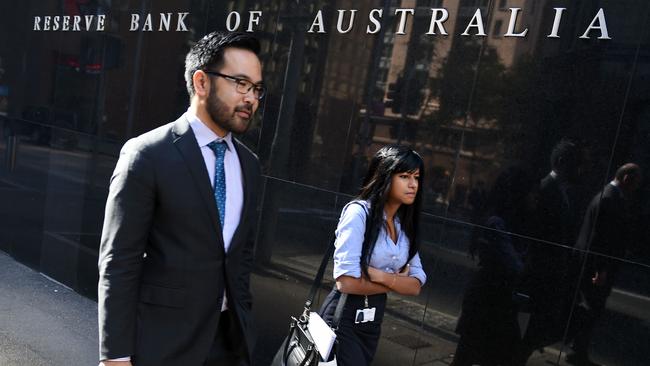The sting in the RBA’s interest rate cut
The Reserve has sufficient evidence to cut, but banks’ reactions could trigger fresh pain.

It was the CPI number last week that appears to have been the deciding factor in the Reserve Bank’s decision to lower official interest rates for the first time in almost a year.
The 25 basis point cut in the cash rate, to 1.75 per cent, follows last week’s surprising 0.2 per cent fall in the inflation rate. The RBA Governor, Glenn Stevens, referred to inflationary pressures being “lower than expected’’ in the opening paragraph of his statement announcing the decision to cut rates today.
The CPI number was “unexpectedly low,’’ he said later in the statement and, with very subdued growth in labour costs and very low cost pressures elsewhere in the world, pointed to a lower outlook for inflation that previously forecast.
There are signs, anecdotal and official, of a slowing in the economy and growing consumer unease that are sufficient to justify the lowering of the cash rate.
The sharp rebound in the value of the Australian dollar since mid-January – it has risen more than 10 per cent against the US dollar, for instance – would have been another factor in the RBA’s considerations.
The RBA has been concerned that the strength of the dollar could undermine – the word Stevens use today was “complicate’’ – the ability of the economy to continue its transition from the resources boom era. Attempts by the bank to talk the dollar down have proven less than successful.
The risk in further reducing rates that are already at historical lows is, of course, that it pours oil onto the flames flickering within the housing market. A housing market bust could, given the exposure of the banking system to housing loans, have dire consequences for the financial system and wider economy.
Stevens said, however, that the RBA board had taken careful note of development in the housing market and that there were indication that the effects of supervisory measures – the tougher guidelines for loan-to-valuation ratios, the crackdown on lending to investors and foreigners and the floor under the major banks’ risk-weightings for mortgages – were strengthening lending standards and that price pressures had tended to abate.
“At present the potential risks of lower interest rates in this area are less than they were a year ago,” he said.
There would, of course, be no risk if the banks didn’t pass on the rate cut and less risk if they kept some of it for themselves. National Australia Bank, however, has already committed to passing on the rate cut in full.
It has been very clear from the Westpac and ANZ interim results this week that last year’s re-pricing of mortgage lending only partly offset the impact of the risk-weight floor and the $20 billion-plus of new capital the major banks were forced to raise.
Given the political climate – the proximity of the Federal election, the Opposition’s calls for a Royal Commission into the banks and the Government’s response of beefing up the Australian Securities and Investments Commission – the banks’ natural inclination to retain at least some of the rate cut will be disciplined by the politics.
Passing on the full 25 basis points will, however, hurt them – or conservative savers who are already being punished by the meagre returns available on their deposits. If the banks try to maintain their margins by lowering the rates they pay on deposits even further, those savers will be squeezed even harder.
The offshore experience with even lower (and in some cases negative) official rates is that it drains profitability from the banks because of the impact on their own holdings of low-cost and “free’’ deposits and shareholder capital.
It is mortgage rates that are most visible and politically sensitive.
If the Australian banks pass on the RBA reduction in full to borrowers, either their shareholders, or depositors, business borrowers or fee-payers – or a combination of anyone and everyone other than aspiring home owners – will end up experiencing at least some pain.




